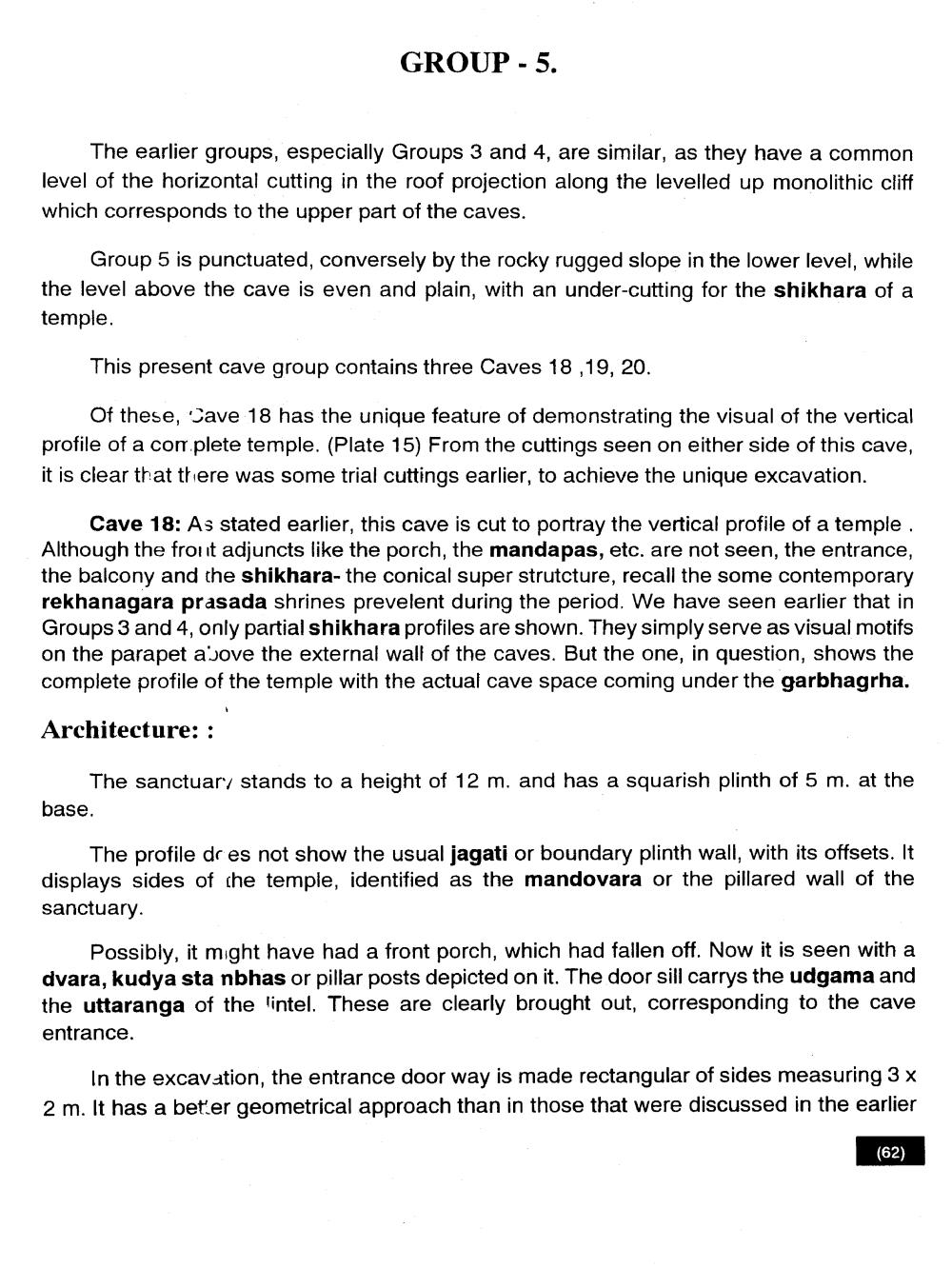________________
GROUP -5.
The earlier groups, especially Groups 3 and 4, are similar, as they have a common level of the horizontal cutting in the roof projection along the levelled up monolithic cliff which corresponds to the upper part of the caves.
Group 5 is punctuated, conversely by the rocky rugged slope in the lower level, while the level above the cave is even and plain, with an under-cutting for the shikhara of a temple.
This present cave group contains three Caves 18 ,19, 20.
Of these, Cave 18 has the unique feature of demonstrating the visual of the vertical profile of a complete temple. (Plate 15) From the cuttings seen on either side of this cave, it is clear that there was some trial cuttings earlier, to achieve the unique excavation.
Cave 18: As stated earlier, this cave is cut to portray the vertical profile of a temple. Although the front adjuncts like the porch, the mandapas, etc. are not seen, the entrance, the balcony and the shikhara- the conical super strutcture, recall the some contemporary rekhanagara prasada shrines prevelent during the period. We have seen earlier that in Groups 3 and 4, only partial shikhara profiles are shown. They simply serve as visual motifs on the parapet a jove the external wall of the caves. But the one, in question, shows the complete profile of the temple with the actual cave space coming under the garbhagrha.
Architecture: :
The sanctuary stands to a height of 12 m. and has a squarish plinth of 5 m. at the base.
The profile dres not show the usual jagati or boundary plinth wall, with its offsets. It displays sides of the temple, identified as the mandovara or the pillared wall of the sanctuary.
Possibly, it might have had a front porch, which had fallen off. Now it is seen with a dvara, kudya sta nbhas or pillar posts depicted on it. The door sill carrys the udgama and the uttaranga of the lintel. These are clearly brought out, corresponding to the cave entrance.
In the excavation, the entrance door way is made rectangular of sides measuring 3 x 2 m. It has a beter geometrical approach than in those that were discussed in the earlier
(62)




